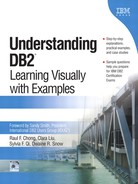3.5. Installing DB2 Manually (Linux/UNIX Only)
DB2 supports two additional methods for installing DB2 on Linux and UNIX.
Using the operating system's native install tool
Using the db2_install script
These two methods require a certain level of operating system knowledge. Tasks such as user and instance creation and configuration that would be performed for you by the DB2 Setup Wizard or during a response file installation must be performed after the product is installed. We do not recommend using either of these methods if you are new to DB2.
3.5.1. Installing DB2 Using the Native Operating System Install Tool
When installing DB2 using an operating system's native install tool, it is important to identify the required, typical, and optional DB2 components for the product that you want to install. Each DB2 product's CD-ROM provides a file that lists the components available for installation. The component list is in a file called ComponentList.htm and is located in the /db2/platform directory on the CD-ROM (where platform is the platform on which you are installing).
You can use the following native operating system install tools to install DB2.
smit on AIX
swinstall on HP-UX
rpm on Linux
pkgadd on Solaris
3.5.2. Installing DB2 Using the db2_install Script
The db2_install script is in the root directory on your DB2 Version 8 product CD-ROM. The db2_install script prompts you for one of the keywords shown in Table 3.4 (depending upon which DB2 product you are installing). Enter the keyword for the product you want to install. If you specify more than one product keyword, separate the keywords with spaces.
NOTEFor Solaris you have the option of specifying a different base directory for the DB2 installation. The default base directory for the Solaris operating environment is /opt. If you choose to install DB2 to a different base directory, links will be set up for the default DB2 installation directory, /opt/IBM/db2/V8.1. Parts of the product are dependent upon the default installation directory. Creating links allows DB2 to physically exist on a base directory other than /opt. |
